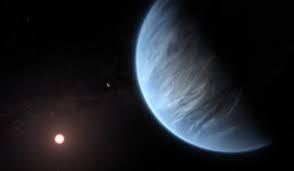Astronomers have found evidence that planets start to form while infant stars are still growing. The high-resolution image obtained with the Atacama Large Millimeter/submillimeter Array (ALMA) shows a young proto-stellar disk with multiple gaps and rings of dust.
This new result, just published in Nature, shows the youngest and most detailed example of dust rings acting as cosmic cradles, where the seeds of planets form and take hold.
An international team of scientists led by Dominique Segura-Cox at the Max Planck Institute for Extraterrestrial Physics (MPE) in Germany targeted the proto-star IRS 63 with the ALMA radio observatory.
This system is 470 light years from Earth and located deep within the dense L1709 interstellar cloud in the Ophiuchus constellation. Proto-stars as young as IRS 63 are still swaddled in a large and massive blanket of gas and dust called an envelope, and the proto-star and disk feed from this reservoir of material.
In systems older than 1,000,000 years, after the proto-stars have finished gathering most of their mass, rings of dust have been previously detected in great numbers. IRS 63 is different: at under 500,000 years old, it is less than half the age of other young stars with dust rings and the proto-star will still grow significantly in mass.
“The rings in the disk around IRS 63 are so young,” emphasizes Segura-Cox. “We used to think that stars entered adulthood first and then were the mothers of planets that came later. But now we see that proto-stars and planets grow and evolve together from early times, like siblings.”
Planets face some serious obstacles during their earliest stages of formation. They have to grow from tiny dust particles, smaller than household dust here on Earth. “The rings in the disk of IRS 63 are vast pile-ups of dust, ready to combine into planets,” notes co-author Anika Schmiedeke at MPE. However, even after the dust clumps together to form a planet embryo, the still-forming planet could disappear by spiraling inwards and being consumed by the central proto-star. If planets do start to form very early and at large distances from the proto-star, they may better survive this process.
The team of researchers found that there is about 0.5 Jupiter masses of dust in the young disk of IRS 63 further than 20 au from its center (at a distance similar to the Uranus orbit in our solar system). That is not counting the amount of gas, which could add up to 100 times more material. It takes at least 0.03 Jupiter masses of solid material to form a planet core that will efficiently accrete gas and grow to form a giant gas planet. Team member Jaime Pineda at MPE adds, “These results show that we must focus on the youngest systems to truly understand planet formation.” For example, there is growing evidence that Jupiter may have actually formed much farther out in the Solar System, beyond the Neptune orbit, and then migrated inwards to its present location. Similarly, the dust surrounding IRS 63 shows that there is enough material far from the proto-star and at a stage young enough that there is a chance for this Solar System analogue to form planets in the way that Jupiter is suspected to have formed.
“The size of the disk is very similar to our own Solar System,” Segura-Cox explains. “Even the mass of the proto-star is just a little less than our Sun’s. Studying such young planet-forming disks around proto-stars can give us important insights into our own origins.”

